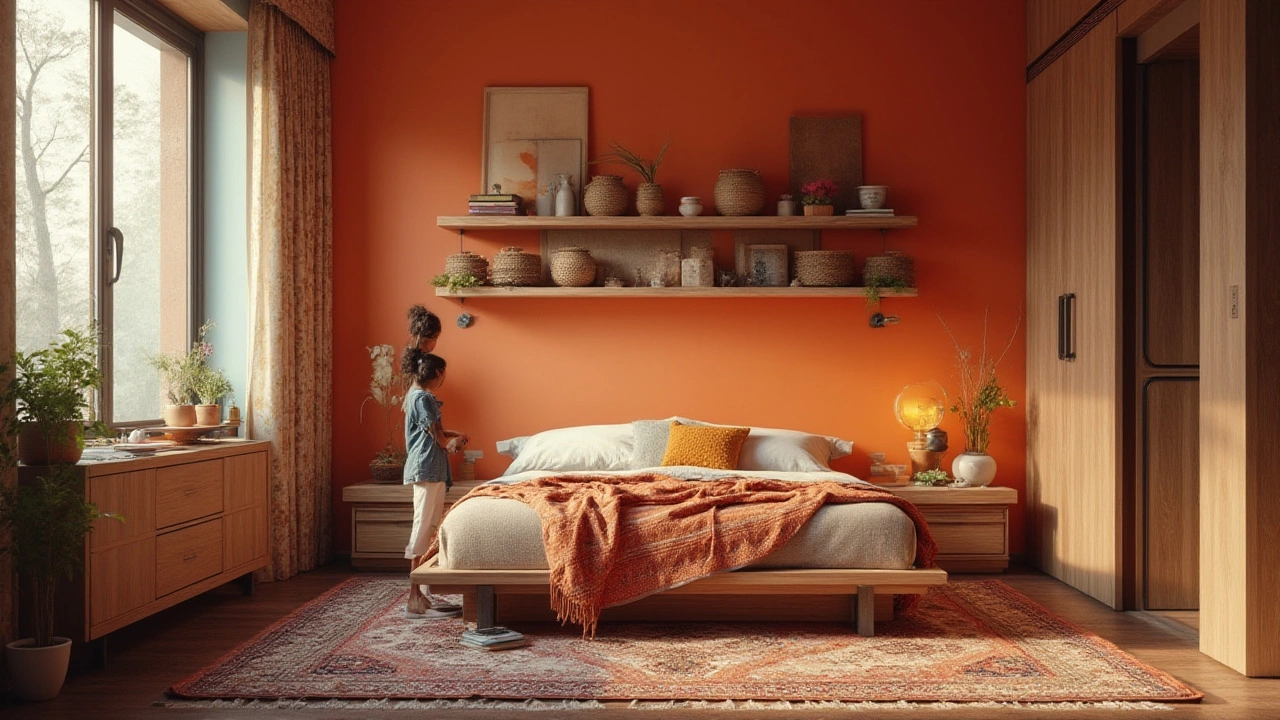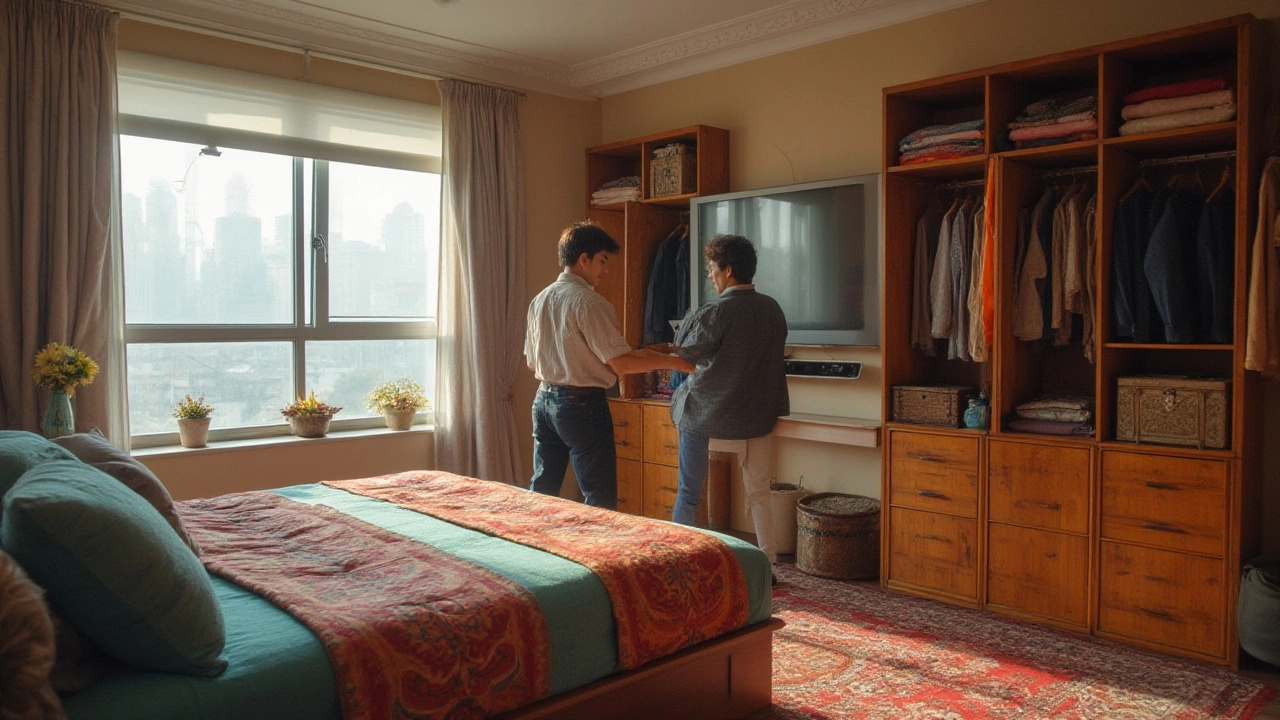Can a Bedroom Have No Closet? Essential Facts for Homebuyers and Renters

Ever walked into a 'bedroom' that felt more like an office or an oddly-shaped box? Few things confuse buyers and renters more than the mystery of what counts as a real bedroom, especially when a closet isn't part of the deal. Pop culture, house-hunting apps, and even some real estate agents have a dozen different answers. Here’s where things get real: a bedroom can legally lack a closet in many places, and people have been living, sleeping, and dreaming in closet-free rooms for centuries. It all comes down to history, home design trends, and what local rules say—which aren’t always the same as what your family, appraisers, or HGTV might insist.
The Legal Reality: What Makes a Room a Bedroom?
Chances are, you’ve heard at least one person say, “A bedroom must have a closet.” Feels like a hard and fast rule, right? Actually, building codes across most cities and states in the U.S. don’t demand a closet for a room to count as a bedroom. The more common legal requirements focus on things like minimum square footage, window size (for emergency escape and fresh air), and access to a hallway or living space. The International Residential Code (IRC), which shapes building rules in most places, never even mentions closets as mandatory. In older homes—especially anything built before the 1950s—closets were rare because people owned less, and free-standing wardrobes were the norm.
So why the confusion? Some real estate agents or appraisers might default to saying a closet is necessary, partly to avoid hassle and partly because buyers expect it. That said, if you check official code requirements, the focus is more on safety—like ensuring the room isn’t a glorified storage closet or a windowless cave. The standard minimum size for a bedroom is usually about 70 square feet, and the window or egress rule is strictly enforced everywhere for safety. Local differences matter, though. In Denver, for instance, the code says nothing about closets, but you need natural light and a second exit in case of fire. New York City? Same story—no closet needed as long as the other standards are met. The only exception: some new homeowner associations and local listing boards might self-impose the closet rule, especially for newly built homes, but it’s not hard-coded law. Always check your area’s legal fine print if you want to play it safe.
Why Closets Became the Bedroom Standard
There’s something funny about the closet debate: older architecture lovers know that built-in bedroom closets are a fairly modern phenomenon. In the 1800s and early 1900s, people stashed their clothes in wardrobes or armoires—big, beautiful pieces of furniture that you can still find in antique stores today. Built-in closets didn’t start appearing commonly in U.S. homes until around the 1950s, when mass production and bigger homes made it feasible. The post-war housing boom made consumers expect more storage for new fashion trends, bigger wardrobes, and the advent of “his-and-her” closets shifted the market.
As psychology and culture shifted, so did home design. Closets became shorthand for comfort, organization, and privacy. Real estate listings began featuring closet size—walk-ins, reach-ins, custom organizers—as major selling points. In modern apartments, condos, and new construction, buyers flat-out expect at least a reach-in closet if not something bigger. That said, plenty of people are happy with a larger open room and creative storage solutions instead. It’s nostalgia and tradition, not code, that’s made bedroom closets a near-standard in mainstream U.S. real estate advertising.

Practical Rental and Buying Tips for Closet-Free Bedrooms
So you’ve found a place you like, but that 'bedroom' has nowhere to stash your clothes. Should you walk away? Not so fast. Closet-free bedrooms aren’t necessarily a deal breaker—sometimes they even give you more usable space. If you’re renting or buying, the key is knowing how to adapt and how it affects your living comfort and resale value.
- Check local code: Don’t rely on hearsay. Call your city building department or check online resources to see if closets are legally required for bedrooms in your town or county.
- Think resale: If you’re a buyer, realize most buyers expect bedrooms with closets, especially in new homes. In a tough market, a bedroom without a closet may sell for less or take longer to move.
- Storage hacks: Free-standing wardrobes, dressers, metal racks, or even elegant curtains hung on pipes can become instant closets with a personal twist. IKEA and other big-box stores have endless options, and some renters even DIY their own.
- Be open with your agent or landlord: If you’re viewing a rental or for-sale property, clarify expectations. Ask if the seller or landlord can add a closet with a wall and sliding doors—they might do it if you ask.
- Use storage beds: Under-bed bins or bed frames with drawers help use every inch of space, which is especially clutch in small apartments.
- Organize like a pro: Open shelving, cube organizers, and hanging racks can actually make a room look bigger and more modern, if done neatly.
- Be upfront with guests: If you’re counting a room without a closet as a bedroom for Airbnb or short-term rental, just let guests know in your listing. Most people would rather have a heads-up than be surprised.
Remember, older homes or converted spaces—think attic rooms, basements, or additions—often skip the closet. If you don’t mind or like vintage charm, use one of these rooms without a closet as a study, nursery, or flex space. Your lifestyle and comfort matter more than sticking to any one-size-fits-all rule.
Common Misconceptions and Tricky Scenarios
Let’s clear the air on a few persistent myths. First, FHA and VA loans—big players in the home financing world—do NOT require a closet for a bedroom when appraisers do their checks. If a lender says otherwise, ask for the policy in writing. Some appraisers might use their own discretion, but it’s rare for them to nix a loan just because of a missing closet if the room is otherwise up to code.
Another one: Finished basements are often advertised as having 'bonus bedrooms.' Technically, as long as there’s legal egress (like a window or walkout), adequate ceiling height, and safe access, you’re good—closet or not. Finished attic bedrooms are similar but watch out for ceiling slopes and minimum ceiling height. If you’re a landlord, state laws about 'habitable space' often include egress and minimum window size—and again, not always a closet.
What trips some people up is local real estate custom. In some markets—parts of California, Texas, or Florida, for instance—agents and buyers will argue that a closet is non-negotiable for listing a space as a bedroom. This is all about tradition and local MLS (Multiple Listing Service) rules, not building codes. So you might see houses listed as “2 bedrooms plus an office,” when the office is perfectly usable as a bedroom but doesn’t have a closet. Always double-check the listing against the legal definition and local expectations.
And maybe the biggest wrinkle: sometimes, sellers will add an armoire to a closet-less bedroom right before an open house, blurring the line between staging and truth. If you’re the buyer, ask which items stay, so you don’t end up with an empty room when you move in. When in doubt, clarify with your real estate agent how rooms are being counted and marketed.

Creative Ways to Store Without a Closet
If you’re staring at a blank wall, don’t panic. Tons of people live happily in homes without a single built-in closet and just get creative. Here are battle-tested solutions that don’t leave you feeling like your room is half-dressed:
- Wardrobes and armoires: These remain a classic for a reason. Whether you grab one from IKEA or hunt for a vintage wood one at an estate sale, these can give you style as well as function.
- Open clothing racks: Turning your wardrobe display into a design feature can actually look slick—especially with matching hangers and a neatly curated capsule wardrobe.
- Curtained closets: Mounting a hanging rod and concealing clothes with a long curtain is a renter-friendly fix, no drilling required.
- Shelving units: Bookcases and floating shelves aren’t just for books—shoes, hats, and folded shirts fit, too.
- Hooks and wall organizers: Hang bags, ties, jewelry, or even tomorrow’s outfit for easy reach.
- Multi-purpose furniture: Benches with storage inside, beds with deep drawers, and ottomans that open up can all swallow clutter.
- Room dividers: Use shelving units as semi-walls to create a "closet corner" and split up big empty rooms.
If you like a challenge, working with a closet-free room forces you to streamline your stuff and stay organized. For parents converting small offices into nurseries or folks sharing space with roommates, these fixes often beat the generic closet for both looks and flexibility. And if you ever decide to sell, it’s not hard to add a low-cost closet—or at least show buyers the options.


